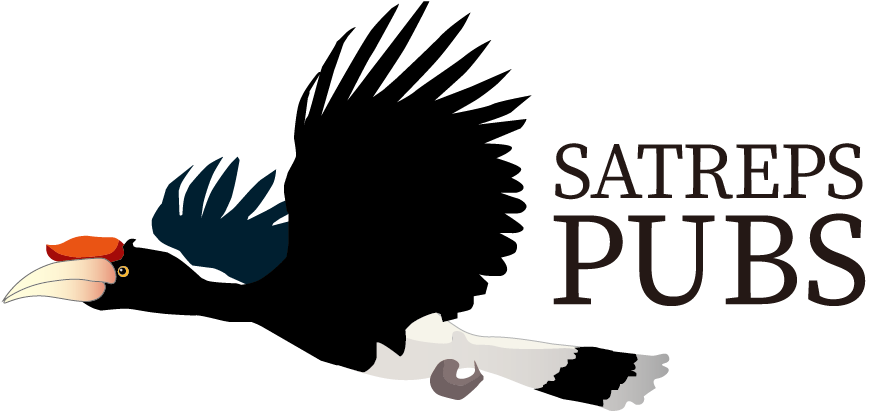An identification key to Macaranga species in Lambir Hills National Park
Based on vegetative traits, not applicable for seedlings or heavily damaged trees.
1a. Stems and twigs hollow, inhabited by ants, entrance holes vertically aligned: 2
1b. Stems and twigs solid, not inhabited by ants, without entrance holes: 13

2a. Stipules¹ flat, not recurved: 3
2b. Stipules strongly recurved: 6
3a. Stipules triangular; food bodies² produced only on the lower surface of young leaves: 4
3b. Stipules broadly ovate, semi-circular; food bodies produced only on the upper surface of young stipules: 5

4a. Central lobe of leaf blade strongly constricted near the base; lateral lobes slightly curved downward; lateral veins on lower surface indistinct because of white wax — M. beccariana
4b. Central and lateral lobes of leaf blade weakly constricted near the base; lateral lobes ±flat; lateral veins prominent on lower surface — M. hypoleuca

5a. Petiole yellowish green; leaf blade sparsely hairy on upper surface and densely hairy on lower surface — M. hosei
5b. Petiole crimson red; leaf blade densely hairy on both surfaces — M. rufescens
6a. Stipules dome-shaped: 7
6b. Stipules horn-like: 11

7a. Stems and twigs whitish, strongly glaucous (covered with wax): 8
7b. Stems and twigs greenish, not glaucous: 9
8a. Leaves shallowly 3-lobed; nectary glands along the leaf margin prominent, particularly larger near the leaf base — M. aëtheadenia
8b. Leaves distinctly 3-lobed, sometimes 5-lobed or subentire; nectary glands along the leaf margin not prominent, uniform in size — M. havilandii

9a. Leaf blade subentire (not lobed), length more than 1.2 times the width — M. hullettii
9b. Leaf blade mainly 3- (rarely 5-) lobed, length less than 1.2 times the width: 10

10a. Stems, twigs, and leaves very rough to touch with coarse hairs (i.e., scabrous) — M. trachyphylla
10b. Stems, twigs, and leaves glabrous (lacking hairs) or covered with scattered minute hairs — M. bancana
11a. Lower leaf surface, twigs, and stems strongly glaucous — M. lamellata
11b. Leaves, twigs, and stems not glaucous: 12
12a. Leaf blade dark shiny green on both surfaces, or dark purplish red on lower surface, margin entire, or sometimes with short lateral cusps; grows in shaded understory or semi-open areas — M. umbrosa
12b. Leaf blade bright green on both surfaces, margin entire without cusps; grows in canopy openings — M. winkleri
13a. Stipules needle-like or narrowly lanceolate; nectary glands 2, prominent at leaf base; grows in forest understory: 14
13b. Stipules broader, shape not as described above; nectary glands many, along leaf margin, or if 2–4, not prominent at leaf base; grows in canopy openings: 15

14a. Petioles longer than 5 cm, glabrous or with stiff hairs ca. 2 mm long — M. praestans
14b. Petioles shorter than 3 cm, covered with soft, minute hairs — M. brevipetiolata
15a. Leaves 3-lobed; stipules longer than 4 cm, upright, densely arranged in a cluster at the shoot apex — M. gigantea
15b. Leaves not lobed; stipules shorter than 4 cm, not in a cluster: 16

16a. Leaves longer than 20 cm, strongly peltate*3 with petiole attached ca. 5 cm from margin — M. recurvata
16b. Leaves shorter than 15 cm, shallowly peltate with petiole attached up to 1 cm from margin — M. conifera

¹Appendages of the leaf, situated in pairs at the base of a leafstalk (petiole)
² White or yellow granules providing a nutrient-rich food source for ants
³Petiole attached to the leaf blade away from the margin

